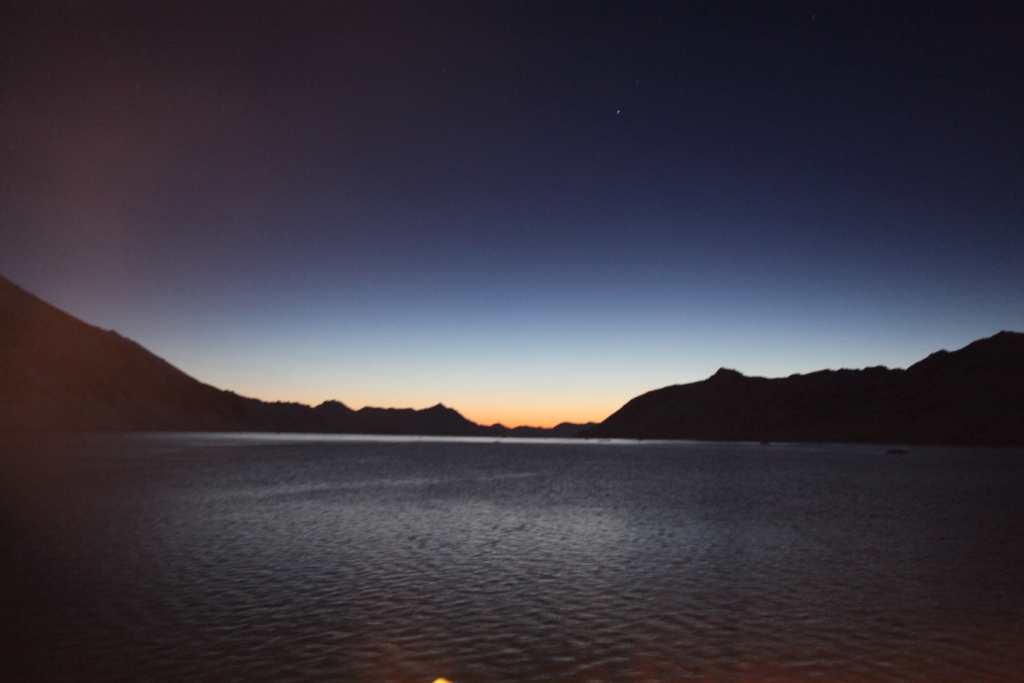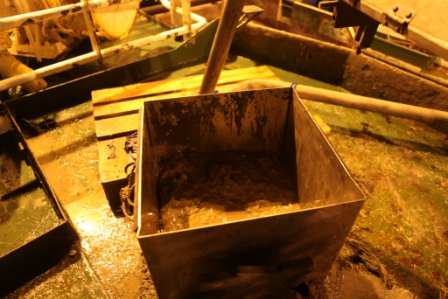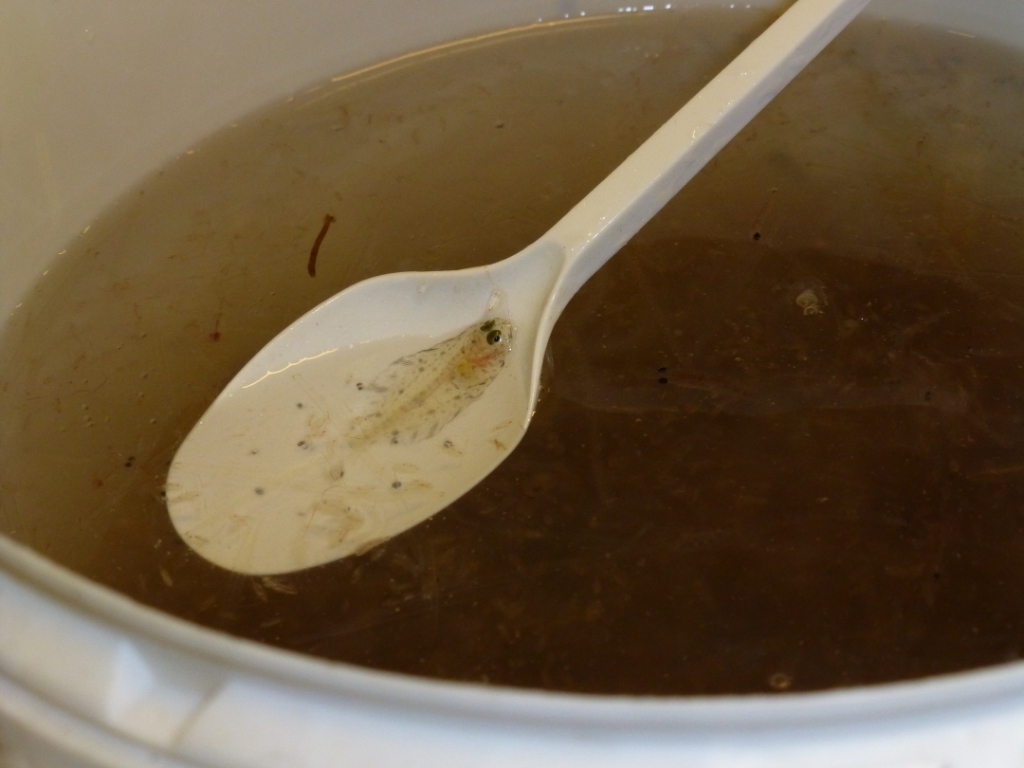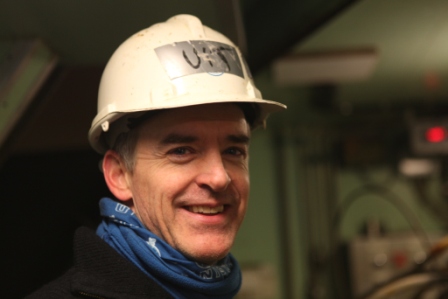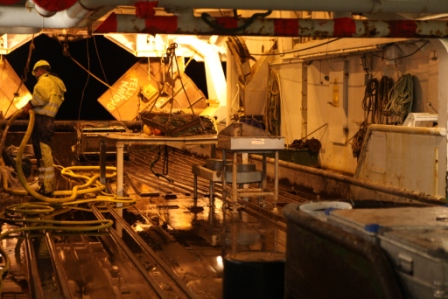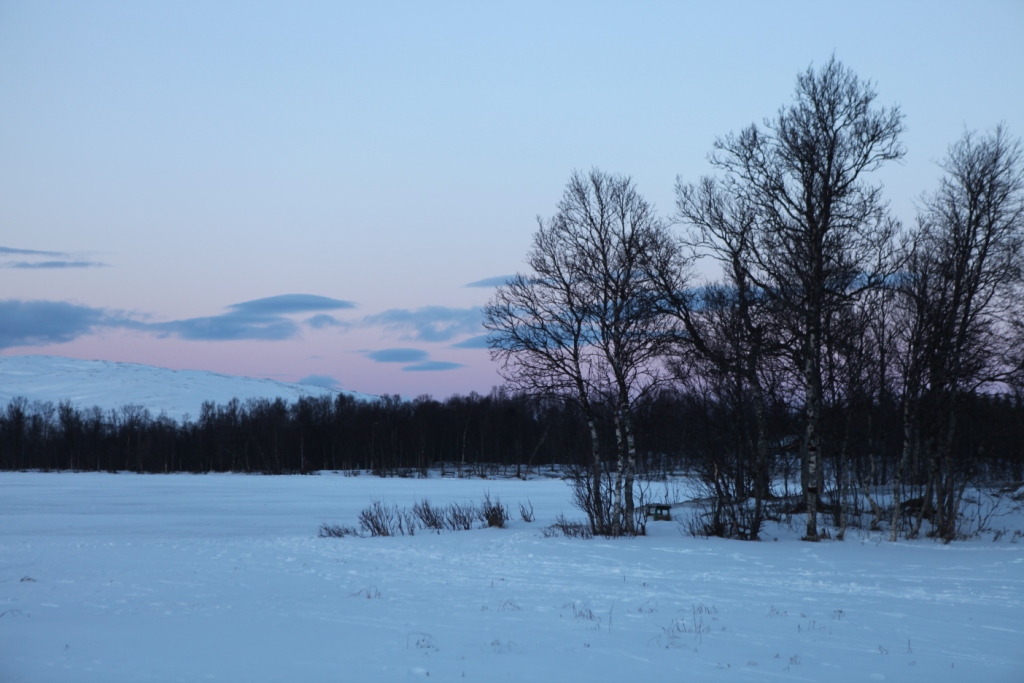A good haul for polar night team
The Polar Night cruise will come to an end on Tuesday, when the last of the scientists will leave the ship with their samples. I was able to stay until the end of the week, when I left the ship at Ny Alesund with some of the researchers, who were changing places with colleagues. I have left Svalbard, but not the Arctic. More about my current whereabouts later.
A good haul in the polar night
It was interesting to hear that our scientists were happy with their “catch”. Sören Häfke, the German scientist from the Alfred Wegener Institute in Bremerhaven, had more than enough of the little crustaceans calanus finmarchius. When they get back to Germany, they can start their genetic analysis to find how their biological clock works in the dark, Arctic winter. In summer, it is assumed light tells them when to come to the surface to feed and when to go down deeper to avoid predators. But what happens in winter, when it is dark all day long? I will look forward to hearing what they find out.
The Russian team had plenty of interesting sediment samples to look into. The others on board also seemed to be happy with the plankton, crustaceans and small fish they brought in for further research. Marine Cusa was a bit unhappy about the lack of polar cod in the fjord. There seemed to be no shortage of larger Atlantic cod. This is related to the amount of Atlantic water currently present in the fjord, expedition leader Stig Falk-Petersen explained to me. It looks as if Marine will be changing the subject of her Master’s thesis. But I have the feeling it will be no less interesting.
“Life doesn’t stop when the light goes out”
Paul Renaud, a Professor at the University Centre in Svalbard, coordinated the logistics of the expedition on board as well as conducting his own biological research. He is one of those who came up with this Polar Night project. As he sums it up, there is a need to follow up on the few studies done in the last ten years which indicate that there is much more activity in the Arctic ocean in winter than previously thought. This must be triggered by processes other than light. Light is critical for the functioning of the ecosystem, but “it’s not that when the light goes out, everything stops functioning”, Paul told me.
From the samples I was shown under the microscope, I can confirm that there is indeed plenty of life going on. And many of the creatures were carrying eggs.
Climate paradox: easier access – shifting parameters
I asked Paul what was driving the surge of research into the Arctic winter. Firstly, new technology makes it possible to take measurements under the ice, and all year round, when there is no-one up here, he explains. Buoys tethered to the ice are one example. A series of permanent observatories has also been set up in the fjords here, measuring temperature, salinity, oxygen, light, chlorophyll and the movement of plankton. The number of research stations in the region has also increased.
The other major factor is quite clearly climate change. The absence of ice makes it much easier to sail up here, says Paul. Just 20 years ago, this fjord would have been completely covered with ice at this time. Now the sea ice is only found in the far reaches of the fjord. But Paul confirmed my theory that while warming is making access easier, it is also changing the parameters the scientists want to measure. “We are addressing a moving target”, is how he describes it.
Ice, less ice, no ice?
When it comes to forecasting how the Arctic ocean and its ecosystem will react to climate change in the long term, the scientists here say we desperately need more data. The IPCC gives around ten scenarios for how climate in the Arctic could develop, Paul explains. Clearly, if we can rely on predictions that the Arctic will be ice-free in summer from the middle of the century at the latest, that will have certain effects on ecosystems
Some organisms can be very flexible, says Renaud, not breeding for ten years and still continuing their populations. But short-lived organisms that rely on a certain timing of ice or live in the sea ice may well be more seriously affected. But without more information, it is impossible to tell how they will react in the long term.
Along with climate change, increased development is bringing more changes to this once inaccessible region, as discussed many times here on the Ice Blog and in my articles for dw.de. Paul is involved in developing monitoring practices. He stresses this is new territory for economic activities like oil exploration, fisheries, tourism and shipping, and that we urgently need more data on the effect of these activities on sensitive components of the Arctic ecosystems.
Can science keep pace with development?
One question I seek the answer to when I talk to Arctic experts is: can this research keep pace with the speed of the development? The answer depends partly, of course, on how fast that development will be. The Svalbard expert says there will still be sea ice in the Arctic in winter for the foreseeable future, around 100-150 years. That will slow economic activities like oil and gas exploration. “That buys us a little more time”, says the marine biologist. But he sees a huge challenge to identify and monitor the impacts of rapidly growing activities like tourism and shipping.
As I packed up to prepare to leave the Helmer Hanssen at the Ny Alesund research station, Paul was giving his instructions to the scientific team. Some were leaving with me, others staying on for the next section. Coordinating the cleaning of the laboratory and deck areas still well splattered with mud, then the packing up and labeling of the samples and equipment, is a major operation. I thought it better not to whinge about fitting my cameras, recorders and Arctic gear into their bags, which somehow seemed to have shrunk over the past week.
On our last night in dock at Ny Alesund, we were treated (not for the first time this week) to some northern lights, eerily dancing across the black Arctic sky. A wicked wind bit at our faces as we headed once again for the world’s northernmost marine lab. The researchers brought crates of samples. I myself brought a treasure trove of stories, ready to go online. The Arctic in winter is harsh but has a charm of its own. It was fascinating to experience the Polar Night, but I was looking forward to my next Arctic destination a bit further south, venue for the major Arctic conference: Arctic Frontiers.
I am now in Tromso, Norway’s “Arctic capital”, where the sun will be reappearing above the horizon this week and the magic pink, pale blue, silvery grey and white Arctic light is already in evidence for several hours a day.



